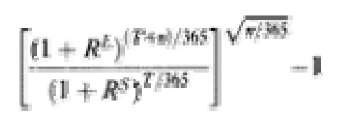A forward or futures contract is one in which completion (in terms of the payment and matching delivery of goods) is deferred, as opposed to spot or cash transactions where the entire transaction takes place immediately. The principal uses of forward and futures contracts are hedging, speculation, arbitrage and spread trading. Foward and futures contracts are similar in principle, but futures contracts are designed to be traded, whereas forward contracts are usually one-off deals between two parties. This distinction has become less clear cut in recent years because of the growth of the over the counter markets in forward contracts which have some of the attributes of conventional futures.
For traders to be able to buy and sell futures contracts easily, there must be a well-organized marketplace and a product standardized in terms of contract size, quality, delivery date, delivery location and counterparty (the clearing house) (Houthakker, 1982). This standardization means that futures contracts are very liquid and most positions are closed out before delivery.
A futures market has a centralized market pl ace (often a trading floor) which trades only during specified hours, with widespread public dissemination of the prices, volumes, and open interest. To eliminate counterparty risk, futures markets use a system of marking to the market, together with a requirement for initial margin payments which are managed through a clearing house. Futures markets are also subject to regulation, which may impose, for example, daily price limits, trading halts an d the prohibition of dual trading. There is continued regulatory concern about the possible effect of futures and over the counter trading on the market for the underlying asset.
The price of a forward (or futures) contract i s established by ”cost of carry” arguments in which the current value of the underlying asset is adjusted for the benefits and costs of the deferred exchange. For an interest rate forward, the no-arbitrage interest rate implicit in the forward price is
where RL and Rs are the annual interest rate s over the period until times T + n and T respectively, Tis the delivery date of the forward and n is the life of the underlying asset.
If interest rates are predictable, Cox et al. (1981) have shown that, in spite of the mark to market rules, forward, and futures prices should be the same (in that arbitrage opportunities are available should the prices differ). They noted that this identity of prices does not hold in the presence of stochastic interest rates, and empirical studies suggest that marking to the market can cause small differences between forward and futures prices (Sutcliffe, 1993).
Selling futures or forward contracts does not require ownership of the underlying asset. As a result, the quantity of outstanding futures and forward contracts may exceed the total world supply of the underlying asset, and the volume of trading in forward and futures markets is often much larger than in the underlying spot market, making them among the world’s largest markets. The principal types of contracts traded on futures markets are interest rates, currencies, stock indices, agricultural commodities, energy and metals.

